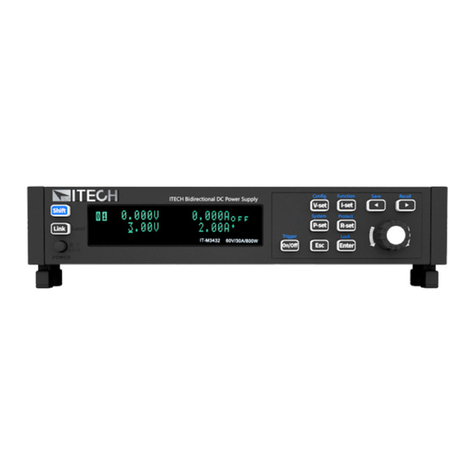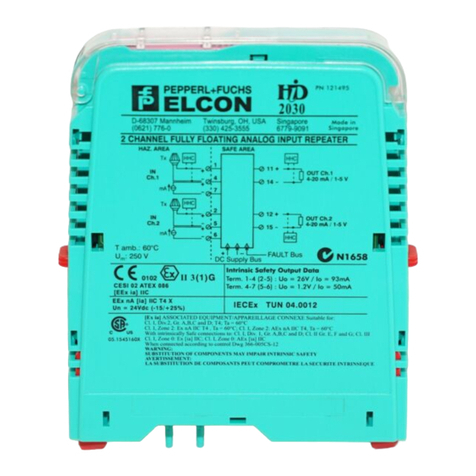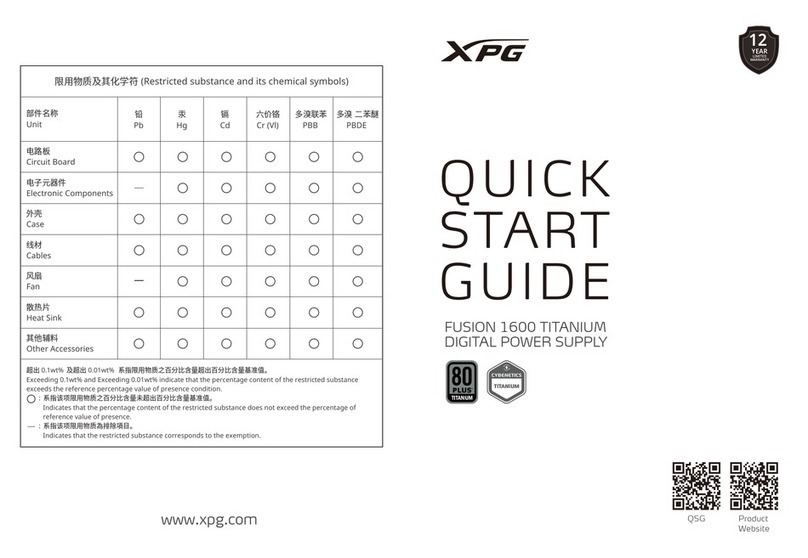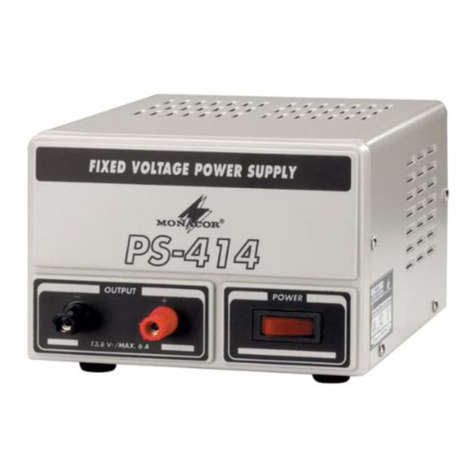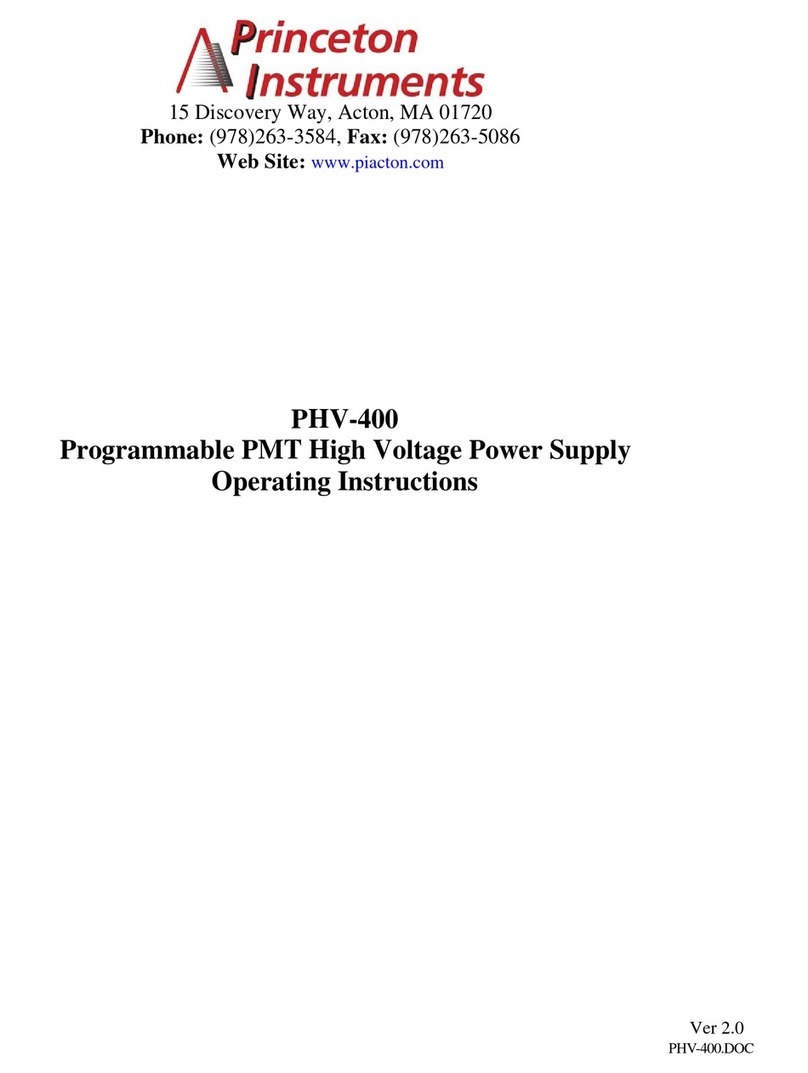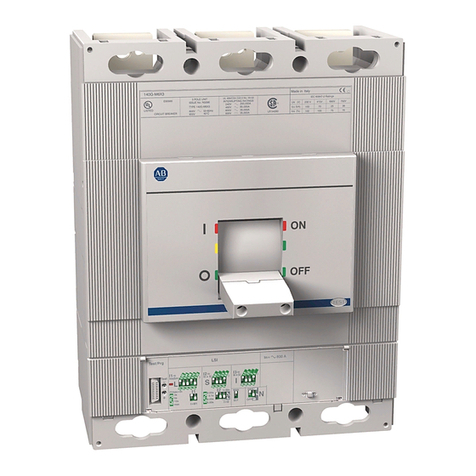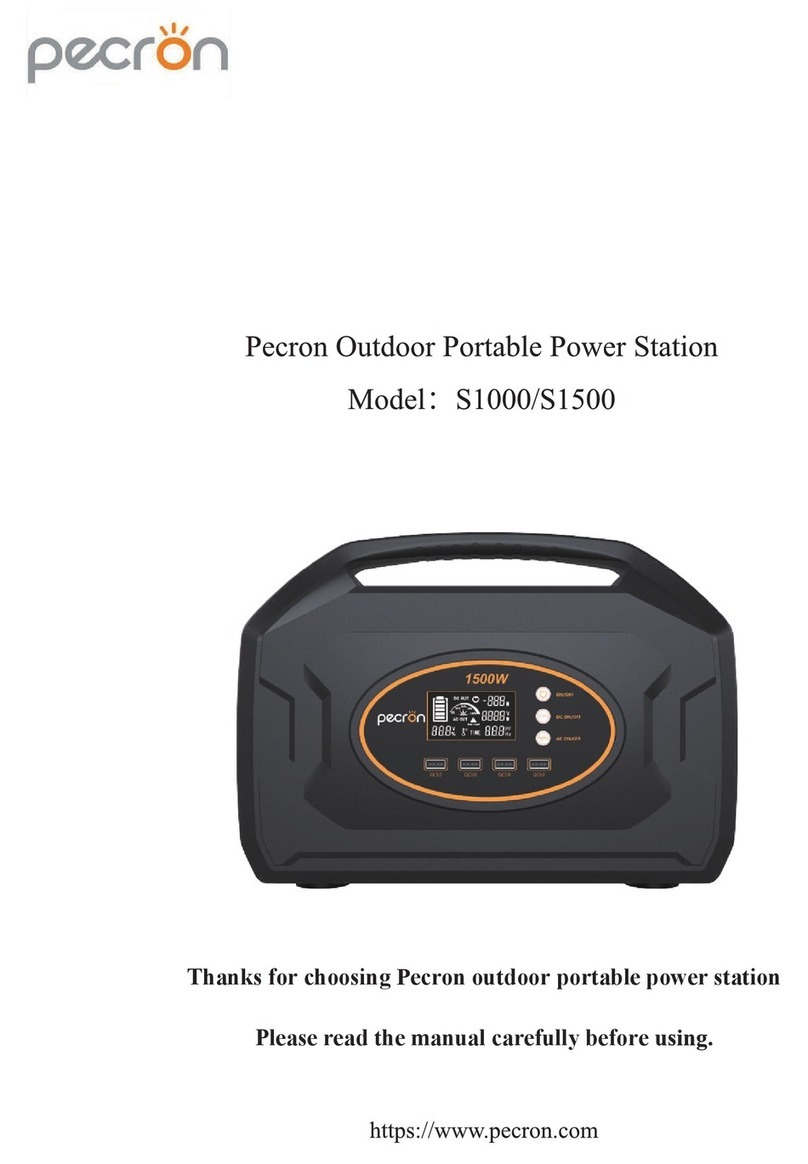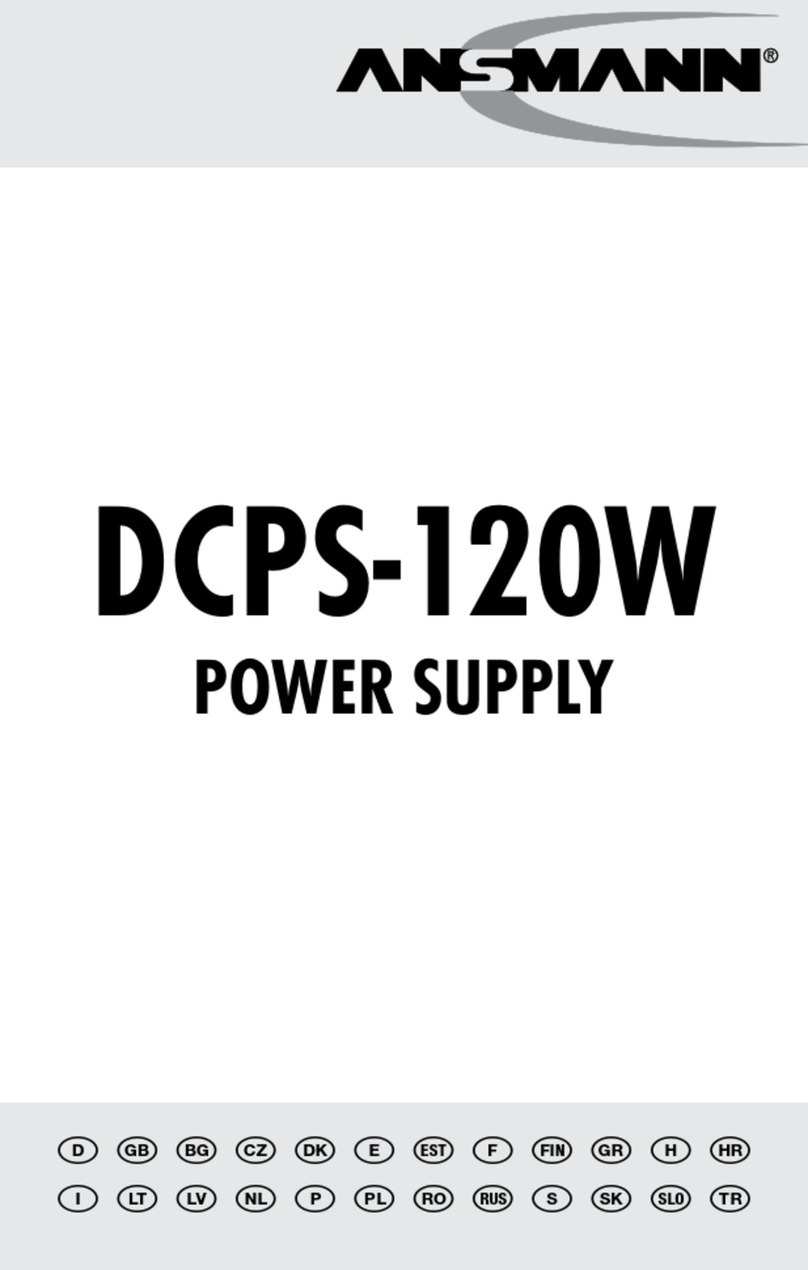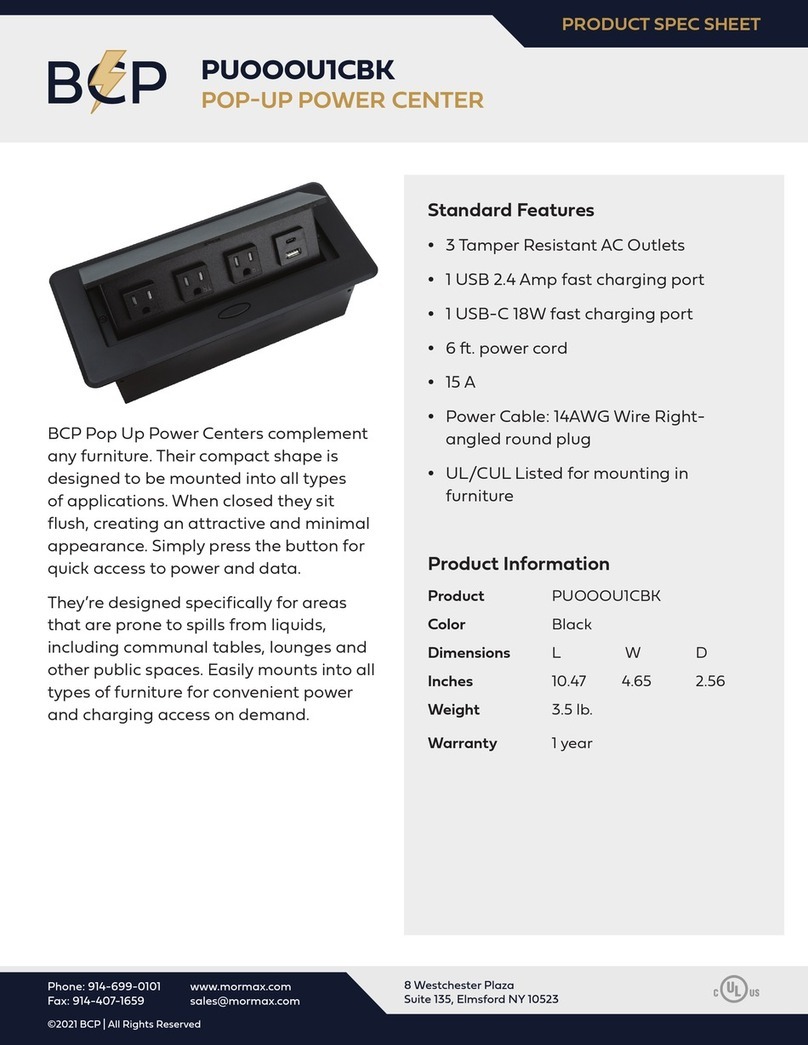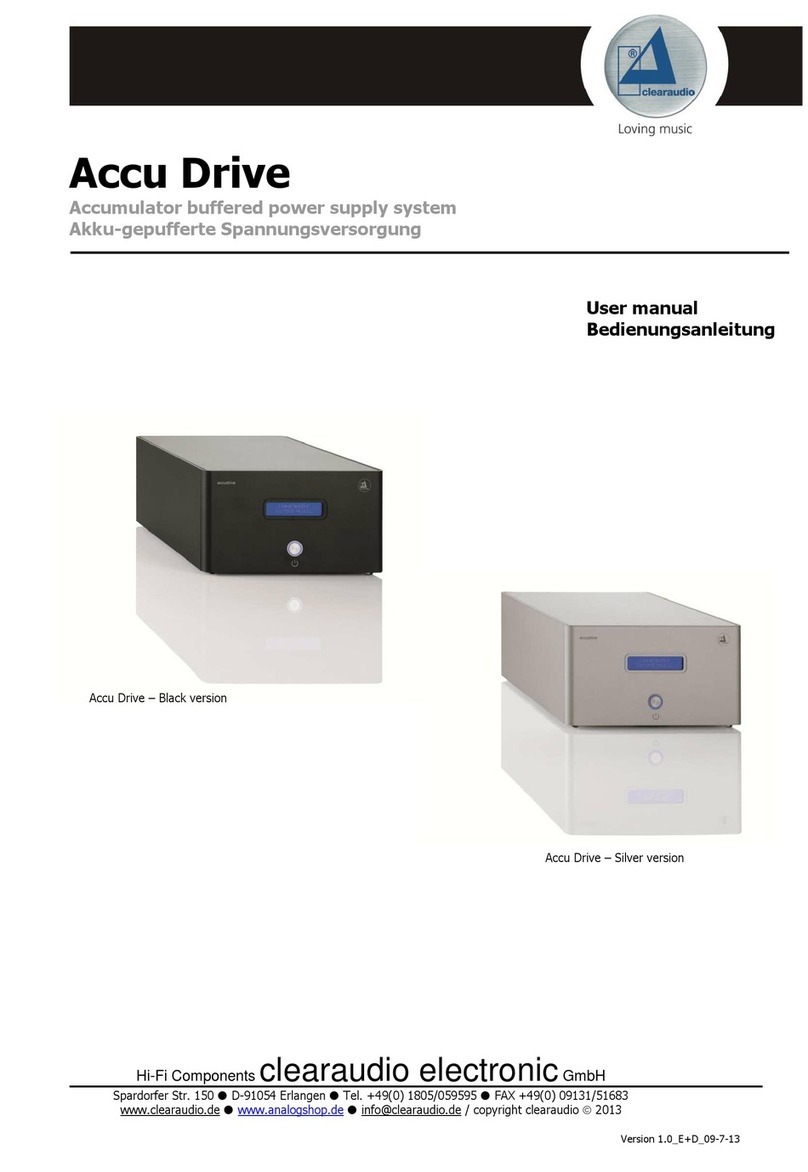Premier1Supplies SolarStop 80 User manual

OPERATING INSTRUCTIONS
SolarStop™80
Electric Fence Energizer
Read full instructions before use!
premier1supplies.com
2031 300th Street •Washington, IA 52353
800-282-6631 •319-653-7622
premier1supplies.com
2031 300th Street •Washington, IA 52353
800-282-6631 •319-653-7622
#113610

ENERGIZER COMPONENTS & LAYOUT
T GROUND
ROD
BATTERY
COMPARTMENT
FENCE
TERMINAL (RED)
GROUND
TERMINAL (BLACK)
POWER
SWITCH
POWER
INDICATOR
LIGHTS
110V PORT
215
MOUNTING STAKE (Optional, sold separately #280149)
WIRING HARNESS 110V BATTERY
RECHARGER/POWER
SUPPLY ADAPTER
DIGITAL TESTER
FOR FENCES
AND BATTERIES
12V 12 AMP
BATTERY
Post/Stake
insertion area
Post/Stake
adjustment
screw area
POST/STAKE
Bottom of
energizer

SAFETY GUIDELINES FOR ELECTRIC ANIMAL FENCES ENERGIZER CONTROL PANELS & PORTS
Max Ouput
OFF
Energy Saver
110V PORT
For attaching 110V
Battery Recharger/
Power Supply Adapter
To reduce the risk…
1. Be careful not to touch an energized wire with the
head or spine. For reasons not fully understood, this
contact point is more dangerous than contact with
hands, arms, feet or legs.
2. Never approach a fence without footwear. Also, wear
footwear that fully encloses the foot (not sandals).
Why? Most footwear are poor conductors (rubber
soles). So they reduce (by absorbing it) the energy
that will pass through your body if you touch a fence
with your hands or head.
3. Never energize barbed wire. Animals and humans
can become entangled and repeatedly shocked—and
thus die.
4. Hang warning signs on all areas and fences where
children and adults may encounter electric fencing.
5. Use smaller energizers on fences located near
children and untrained adults. (Most experts agree
that small energizers are safer than large units as
long as animal control isn’t put at risk.)
6. Make the fence as visible as possible to both
humans and animals. Use conductors and posts
that can be seen both day and night, and against all
backgrounds. That’s why Premier has long advised
What NOT to do!
• Never place your head or upper spine near an electried wire.
• Never attempt to step over or climb through an energized fence of any kind.
• Never encourage anyone to touch an electric fence.
What TO do!
• Instruct all visitors and children to never touch electric fence.
the use of white/black conductors for contrast
and visibility.
7. If possible, do not energize wires lower than 12".
This allows humans who might contact a wire
enough space to fall away from energized wires.
8. Build fences so all energized wires are on the
inside of your boundary fence (less likely to be
touched, and anyone who touches them without
your permission is trespassing). We prefer offset
internal energized wires on our perimeter fences.
9. Never connect two energizers to the same fence.
It doubles the pulse frequency (unsafe!), not
the output.
10. The shock from electric fences can panic animals
(e.g. horses) and cause them to crash into fences (or
people) resulting in injury to one or both.
To reduce this risk:
a. Do not install electried wires on feedlot
fences, corral fences or around riding arenas.
b. Reduce the available volts and joules on
fences that enclose very small areas (e.g. night
pens) to lessen the likelihood of animal stress
and possible panic.
Are electric fences a serious safety risk to humans?
Because touching an electric fence is painful and the voltages are high, most assume that the risks from an energized
fence must also be high.
That’s a myth. Consider that millions of people throughout the world are “exposed” to millions of miles of electric
fences every day—yet there is less than one death or serious injury per year worldwide—and the fence is
often not the cause.
Compare that to the number of annual injuries and deaths that occur from exposure to tractors, skid loaders, PTO
shafts, balers, mowers, combines, bulls, stallions, etc. This is not to suggest that there is no risk at all. There is, indeed,
a small level of risk. And with risk, there is also liability.
To Reduce Risk & Liability
DON’T
POWER
SWITCH
Fig. 3
GREEN
Flashes when
unit is on
YELLOW
Flashes if
solar panel is
producing power
RED
Flashes if battery
capacity is
below 11.5V
(recharge battery
immediately,
see p. 7)
14 3
(=) Max Output , Mode II
Battery Max. Output No Load Impulse Current Power
Capacity Energy Voltage Interval Consumption Consumption
Full 0.8 joules 10,200V 1.5 seconds 64-45 mA .832 watts
< to 11 volts 0.4 joules 7,300V 2 seconds 64-45 mA .300 watts
(—) Energy Saver, Mode I
Battery Max. Output No Load Impulse Current Power
Capacity Energy Voltage Interval Consumption Consumption
Full 0.48 joules 8,000V 1.5 seconds 35-24 mA .460 watts
< to 11 volts 0.4 joules 7,300V 2 seconds 35-24 mA .300 watts

INSTALLATION AND CONNECTION
A. Open side panel (battery compartment) of
energizer and connect battery. Attach black wire
(– negative) to black terminal and red (+ positive) to
red terminal. Replace panel.
B. With a dead blow hammer (sold separately
#205015) or using your hand strength, insert into
the ground, the full length of the T ground rod.
If connecting leads and electric animal fence wires are installed near an overhead power line,
their height above the ground shall not exceed 6 ft.
This height applies to either side of the orthogonal projection of the outermost conductors of the power
line on the ground surface, for a distance of:
— 6.6 ft for power lines operating at a nominal voltage not exceeding 1000V;
— 49 ft for power line operating at a nominal voltage exceeding 1000V
Where an electric animal fence crosses a public pathway, a non-electried gate shall be incorporated
in the electric animal fence at that point or a crossing by means of stiles shall be provided. At any such
crossing, the adjacent electried wires shall carry warning signs. In areas of public access, use an electric
fence warning sign (#346000) every 33 ft to identify the electried wire(s).
Any part of an electric animal fence that is installed along a public road or pathway shall be identied
at frequent intervals by warning signs securely fastened to the fence posts or rmly clamped to the
fence wires.
Ensure that all 110V-operated, ancillary equipment connected to the electric animal fence circuit
provides a degree of isolation between the fence circuit and the supply 110V equivalent to that provided
by the energizer.
Protection from the weather shall be provided for the ancillary equipment unless this equipment is
certied by the manufacturer as being suitable for use outdoors, and is of a type with a minimum
degree of protection.
Read for special applications
• of electric fences in pastures: Train livestock to electric fencing prior to entry into pastures. Allow
livestock to approach an electric fence for the rst time in a low stress situation.
• of electric fences in zoos and game reserves: The mounting of such installations may only be
carried out of trained specialist, a mechanical barrier must be provided which separates the electric
fence from visitors.
• of Game Fencing: electric fencing has been used widely throughout the world for game animals,
deer, bears, elk and elephant. Electric fences are a psychological barrier and should not be
considered a complete physical barrier fence. With any electric fence occasional animal penetration
may occur (as with any other type of fence). It is important for game fencing to have power on the
fence the same day as the fence is constructed. Animals investigating the new obstruction will be
shocked and will relate the shock to the new obstruction. If no power is on the fence and animals
learn to walk through the fencing system with no electric shock, this causes major problems later on
since they will not relate the electric shock to the fence after the power is turned on. An electric fence
is not recommended for animals under hunting pressure. For specic questions on game fencing
contact your dealer.
413
Warning: In 1991 an accidental fatality occurred when a young child’s head contacted an electried fence while the
child was crawling on wet grass. The fence was correctly installed and functioning properly. The energizer was a UL
approved unit. As a result, Premier strongly advises against allowing toddlers access to any electried fences. Also,
due to this incident and others, experts now suggest that human contact by an energized wire to the head and neck
may be the most dangerous point of contact. We urge all to especially avoid this kind of contact.
C. Attach the wiring harness to the energizer and to
the fence:
1. Turn off energizer.
2. Remove the black terminal knob on
the energizer.
3. Take the wire with the black clip and place the
ring connector over ground terminal stud.
4. Replace knob and tighten to secure.
5. Attach the black clip to the ground rod.
6. Remove the red terminal knob on
the energizer.
7. Take the wire with the orange clip and place
the ring connector over fence terminal stud.
8. Replace knob and tighten to secure.
9. Attach the orange clip to the stainless steel
connector at the end post of the netting or to
the end of a stranded fence.
side
panel
battery
compartment
Orange Fence
(+ positive)
Black Ground
(– negative)
Wiring Harness
clips
connector rings
battery

IMPORTANT:
Make sure the battery is measuring 12.6—13.4 volts. If it’s not, recharge the battery (see p. 7). Placing the
energizer in shade will not keep the battery fully charged. Make sure the panel faces south in full sun.
Read Annex BB. 1 of the International Safely Standard IEC 60335-2-76 + EN 60335-2-76 (below).
ANNEX BB. 1:
Electric animal fences and their ancillary equipment shall be installed, operated and maintained in a manner
that minimizes danger to persons, animals or their surroundings.
WARNING: Do not touch the fence with head, mouth, neck or torso. Do not climb over, through or under
a multi-wire electric fence. Use a gate or a specially designed crossing point. Electric animal fence
constructions that are likely to lead to the entanglement of animals or persons shall be avoided.
An electric animal fence shall not be supplied from two separate energizers or from independent fence
circuits of the same energizer.
For any two separate electric animal fences, each supplied from a separate energizer independently timed,
the distance between the wires of the two electric animal fences shall be at least 8.3 ft. If this gap is to be
closed, this shall be effected by means of electrically non conductive material or an isolated metal barrier.
Barbed wire or razor wire shall not be electried by an energizer.
A non-electried fence incorporating barbed wire or razor wire may be used to support one or more off-set
electried wires of an electric animal fence. The supporting devices for the electried wires shall be
constructed so as to ensure that these wires are positioned at a minimum distance of 6" from the vertical plane
of the non-electried wires. The barbed wire and razor wire shall be grounded at regular intervals.
Follow the energizer manufacturer's recommendations regarding earthing.
A distance of at least 33 ft should be maintained between the energizer earth electrode and any other
with the grounding system connected parts such as the power supply system protective ground or the
telecommunication system ground.
• Connecting leads that are run inside buildings shall be effectively insulated from the grounded
structural parts of the building. This may be achieved by using insulated high voltage cable. Use this
lead-out cable in buildings and where soil could corrode exposed galvanized wire. Never use household
electrical cable: it is made for a maximum of 600 volts and will leak electricity.
• Connecting leads that are run underground shall be run in conduit of insulating material or else
insulated high voltage cable shall be used. Care must be taken to avoid damage to the connecting leads
due to the effects of animal hooves or tractor wheels sinking into the ground.
• Connecting leads shall not be installed in the same conduit as the mains supply wiring,
communication cables or data cables.
• Connecting leads and electric animal fence wires shall not cross above overhead power or
communication lines. Crossings with overhead power lines shall be avoided wherever possible. If such a
crossing cannot be avoided it shall be made underneath the power line and as nearly as possible at right
angles to it. If connecting leads and electric animal fence wires are installed near an overhead power line,
the clearances shall not be less than those shown in Table BB1.
POWER LINE VOLTAGE (V) CLEARANCE
< 1,000V 10 ft
> 1,000V and < 33,000V 13 ft
> 33,000V 27 ft
D. Position energizer so that the solar panel faces south
in full sun.
12 5
Table BB 1
Minimum clearances from power line for electrical animal fences
14 15
SAFETY GUIDELINES ELECTRIC ANIMAL FENCES
- To Reduce Risk and Liability ...
REMEMBER:
Never touch an electric fence wire with your head or upper
torso (see photo at right).
Never allow anyone else to do so. Instruct all visitors and
children to never do so.
Risk and Liability Reduction Methods
1. For reasons not fully understood, contact with the spi-
nal & head area is much worse than contact with hands,
arms or legs.
2. Most experts agree that smaller energizers are safer
than large ones (as long as animaI control is not put at
risk). So use smaller energizers on fences near children
and untrained adults. To do so, change the fence design
or management to reduce the weed to wire contact.
3. Never connect two energizers to one wire at the same
time.
4. Never energize barbed wire.
5. With high joule energizers reduce the available energy
on wires near children or untrained adults with a 500
ohm resistor. (Not illustrated here.)
6. Hang warning signs on the fence at critical areas where
children or untrained adults will encounter them (inset at
right).
7. Where practical do not energize wires less than 12 in.
above the soil. Why? To allow humans that might con-
tact a wire enough space to fall (by gravity) away from
any energized wires.
8. Ensure that all energized wires are on the inside of
your boundary fence (ensuring that anyone who tou-
ches them without your permission is a trespasser). For
boundary fences achieve this with internal energized
offset wires.
9. The shock from electric fences can panic animals who
may in turn crash into fences (or people) resulting in in-
jury to one or both. Horses have been known to rear and
throw their rider-resulting in injuries to both.
To reduce this risk:
a. Build only non-electric fences along horse trails, around
livestock corrals and surrounding lots.
b. Reduce the available volts and joules on fences that
enclose very small areas (e.g. night enclosures) thus re-
ducing panic and stress.
Never allow your head to get near an
electrified wire. This photo was taken
to illustrate what not to do.
Accidental head/neck contact can
occur when pushing a voltage probe
into the soil when checking voltage.
Be very careful when you do so to
avoid head to wire contact.
A fence that is exposed to untrained
adults or children should never be
without warning signs. Without them
your liability may well be higher.
Solar
IntelliShock 30
15 - 29
mA/hr
0.3
joules
max.
10000 v ~ 10300 v ~ 3300 v ~ 2500 v ~ 1800 v
Solar
IntelliShock 60
20 - 58
mA/hr
0.6
joules
max.
11500 v ~ 11600 v ~3900 v ~ 4000 v ~ 2400 v
Solar
IntelliShock 120
28 - 104
mA/hr
1.2
joules
max.
12700 v ~ 13700 v ~4300 v ~ 6000 v ~ 3700 v
Solar
IntelliShock 180
24 - 140
mA/hr
1.8
joules
max.
11000 v ~ 13100 v ~5000 v ~ 9000 v ~ 4700 v
TECHNICAL DATA
SUBJECT TO TECHNICAL ALTERATIONS !
5km
5 k Ω
5km
500 Ω
0 m 250 m
1 M Ω
250m
500 Ω
MAX. FENCE LINE LENGTH
Solar IntelliShock 30 ≥ 9"
Solar IntelliShock 60 ≥ 18"
Solar IntelliShock 120 ≥ 36" or 3’
12v DC
draw Input
Solar IntelliShock 30 = 1-2 Rolls
Solar IntelliShock 60 = 3-5 Rolls
Solar IntelliShock 120 = 6-10 Rolls
Solar IntelliShock 180 = 9-15 Rolls
Solar IntelliShock 30 = ½ mile
Solar IntelliShock 60 = 1 mile
Solar IntelliShock 120 = 2 mile
Solar IntelliShock 180 = 3 mile
Required
Ground
RED Fence
Terminal
Orange Clip
to fence.
Output
MAXIMUM FENCE LINE LENGTH
14 15
SAFETY GUIDELINES ELECTRIC ANIMAL FENCES
- To Reduce Risk and Liability ...
REMEMBER:
Never touch an electric fence wire with your head or upper
torso (see photo at right).
Never allow anyone else to do so. Instruct all visitors and
children to never do so.
Risk and Liability Reduction Methods
1. For reasons not fully understood, contact with the spi-
nal & head area is much worse than contact with hands,
arms or legs.
2. Most experts agree that smaller energizers are safer
than large ones (as long as animaI control is not put at
risk). So use smaller energizers on fences near children
and untrained adults. To do so, change the fence design
or management to reduce the weed to wire contact.
3. Never connect two energizers to one wire at the same
time.
4. Never energize barbed wire.
5. With high joule energizers reduce the available energy
on wires near children or untrained adults with a 500
ohm resistor. (Not illustrated here.)
6. Hang warning signs on the fence at critical areas where
children or untrained adults will encounter them (inset at
right).
7. Where practical do not energize wires less than 12 in.
above the soil. Why? To allow humans that might con-
tact a wire enough space to fall (by gravity) away from
any energized wires.
8. Ensure that all energized wires are on the inside of
your boundary fence (ensuring that anyone who tou-
ches them without your permission is a trespasser). For
boundary fences achieve this with internal energized
offset wires.
9. The shock from electric fences can panic animals who
may in turn crash into fences (or people) resulting in in-
jury to one or both. Horses have been known to rear and
throw their rider-resulting in injuries to both.
To reduce this risk:
a. Build only non-electric fences along horse trails, around
livestock corrals and surrounding lots.
b. Reduce the available volts and joules on fences that
enclose very small areas (e.g. night enclosures) thus re-
ducing panic and stress.
Never allow your head to get near an
electrified wire. This photo was taken
to illustrate what not to do.
Accidental head/neck contact can
occur when pushing a voltage probe
into the soil when checking voltage.
Be very careful when you do so to
avoid head to wire contact.
A fence that is exposed to untrained
adults or children should never be
without warning signs. Without them
your liability may well be higher.
Solar
IntelliShock 30
15 - 29
mA/hr
0.3
joules
max.
10000 v ~ 10300 v ~ 3300 v ~ 2500 v ~ 1800 v
Solar
IntelliShock 60
20 - 58
mA/hr
0.6
joules
max.
11500 v ~ 11600 v ~3900 v ~ 4000 v ~ 2400 v
Solar
IntelliShock 120
28 - 104
mA/hr
1.2
joules
max.
12700 v ~ 13700 v ~4300 v ~ 6000 v ~ 3700 v
Solar
IntelliShock 180
24 - 140
mA/hr
1.8
joules
max.
11000 v ~ 13100 v ~5000 v ~ 9000 v ~ 4700 v
TECHNICAL DATA
SUBJECT TO TECHNICAL ALTERATIONS !
5km
5 k Ω
5km
500 Ω
0 m 250 m
1 M Ω
250m
500 Ω
MAX. FENCE LINE LENGTH
Solar IntelliShock 30 ≥ 9"
Solar IntelliShock 60 ≥ 18"
Solar IntelliShock 120 ≥ 36" or 3’
12v DC
draw Input
Solar IntelliShock 30 = 1-2 Rolls
Solar IntelliShock 60 = 3-5 Rolls
Solar IntelliShock 120 = 6-10 Rolls
Solar IntelliShock 180 = 9-15 Rolls
Solar IntelliShock 30 = ½ mile
Solar IntelliShock 60 = 1 mile
Solar IntelliShock 120 = 2 mile
Solar IntelliShock 180 = 3 mile
Required
Ground
RED Fence
Terminal
Orange Clip
to fence.
Output
3–6 rolls
Depending on soil conditions and vegetation
Netting Strand Fence
Cattle: 1-1/2 miles of 3 strand fence
Sheep: 1/2 mile of 5–7 strand fence
E. Turn on energizer and check the voltage at the end
of the fence with a fence tester to ensure the fence is
properly electried before introducing it to animals.
Minimum of 3000V at the end of the fence.

B. SAFETY GUIDELINES ELECTRIC ANIMAL FENCES
PART 1: PRINCIPLES AND LIMITATIONS OF ELECTRIC FENCING FOR ANIMALS
An electric fence consists of an energizer and a connected fence where the energizer feeds electric impulses into the
fence. The electric animal fence represents a “psychological barrier” for the animals; it keeps animals inside or outside
a certain area, it can also be used to train a certain behavior (e.g. cow trainer in the stable).
No electric or mechanical fence can guarantee a 100% effective solution in protecting or containing your animals.
The effectiveness of an electric fence may vary upon the unique local conditions within which the fence is installed.
A suitable combination of products together with competent installation will ensure the best results. On occasion
a determined animal may overcome the most rigid of mechanical fences or the most comprehensive electric fence
system. For this reason the seller gives no assurance that the fence system is 100% safe against escape. A well
installed electric fence can offer a high level of security when compared to a mechanical fence, as the psychological
barrier, an electric shock, can deter the animal from nding a way to circumnavigate the fence. Electric fences will also
offer far greater level of exibility.
PART 2: WARNING! READ BEFORE USING
• This energizer is not intended for use by persons (including children) with reduced physical, sensory or mental
capabilities, or lack of experience and knowledge, unless they have been given supervision or instruction concerning
use of the energizer by a person responsible for their safety. Children should be supervised to ensure that they do
not play with the energizer.
• Never touch an electric fence wire with your head, mouth, neck or torso. Never allow anyone else to do so. Instruct all
visitors and children to never do so. Do not climb over, through or under a multi-wire electric fence. Use a gate or a
specially designed crossing point.
• To avoid any risks with the head, mouth, neck or torso contacts, use low-output energizers or lower the output of a
stronger energizer on fences near children and untrained adults. Lower the energizer output by placing a 500 ohm
resistor between the fence terminal and the fence. Adding the resistor may require changing the fence design to
reduce weed contact (which will further lower the output).
• Keep a distance of at least 8.3 ft with the electric fence to all metallic parts (i.e. to water pipes).
• Do not place combustible materials near the fence or energizer connections. In times of extreme re risk,
disconnect energizer.
• If there is a danger of ood, the energizer must be turned off and removed from the area.
• Help to avoid any misuse of the energizer by:
— Reading the instructions
— Securing the energizer against un-allowed access (e.g. anti-theft or anti-children equipment) if the location
makes this necessary
• Check your local ordinance for specic regulations.
• Read Annex BB.1 of the International Safety Standard IEC 60335-2-76 + EN 60335-2-76 (page 12).
DUTY TO THE PUBLIC:
Safe electric fence construction is covered on pp. 4–7.
Electric fence can be hazardous when there is a risk of entrapment or entanglement, or other hazards exist. Serious
injury or death my result. Take all steps to avoid the risk of entrapment or entanglement. Fasten warning signs to
electric fence posts or wires at frequent intervals along any public roads or pathways. Incorporate a non-electried
gate or stile where an electric animal fence crosses a public pathway and fasten warning signs to fence posts or wires
adjacent to the crossing.
OPTIMAL SOLAR ORIENTATION AND PLACEMENT
1. POSITION THE ENERGIZER SO THAT THE
SOLAR PANEL FACES DUE SOUTH
This will allow the panel to receive the maximum
amount of sunlight possible even during the low-light
days of winter. Consider the sun’s movement throughout
the day and avoid placing the unit where it may be
covered by shadows from trees, bushes or tall grass.
WARRANTY
2-year warranty for energizers and solar panels covers lightning damage and defective parts or workmanship.
Should an energizer fail, we will replace the unit, bill you for the cost to do so, then reimburse you for warranted unit
after we have examined the failed unit. Misuse and ood damage are not covered.
30-day warranty for all batteries.
2. REGULARLY REMOVE ALL DEBRIS
FROM SOLAR PANEL
This includes grass clippings, dust (especially on gravel
roads), leaves and snow as this will reduce the solar
panel’s ability to recharge the battery.
Use 110V Recharger (see p. 2) or solar panel to fully charge battery before use.
Battery may have discharged during storage and transport.
611

A. FUNCTION AND MAINTENANCE
WORKING PRINCIPLE:
The solar panel (see p. 6) produces electric current when exposed to usable sunlight. The fence energizer requires a
constant current, day and night. Thus the panel current is stored in the battery which delivers the energizer current.
The solar panel might not always be capable of recharging the battery, especially in dark, gray and foggy months
(i.e. October –February).
Tip: Recharge the battery externally as needed (see p. 7).
STORAGE, RECHARGE, MOUNTING AND CONNECTIONS:
When not in use, ensure the battery stays charged. You can charge the battery in the sun or with the included 110V
charging unit. Do not overcharge the battery. A fully charged 12V battery will test between 12.6 and 13.4V.
When the energizer is not being used, store the unit indoors at room temperature. Batteries don’t work well when
they’re left discharged, or at a low charge, for long periods of time. Periodically, recharge the battery so that it does not
discharge below 60%.
WINTER TIME BATTERY PROTOCOL:
When not in use, ensure the battery stays above a charge of 12.2V.
Lead acid batteries don’t work well when they’re left discharged, or at a low charge, for long periods of time.
Periodically recharge the battery in the sun or with the included 110V charging unit. Stop charging when the battery
measure 12.6 – 13.4 volts.
GROUNDING:
For a faultless operation and to obtain the optimal output, good ground is essential. Therefore grounding must be
made in a moist location. An additional or deeper ground rod may improve grounding, especially in dry, arid regions.
The distance between the system earth (grounding) and other earth systems (e.g. telephone, mains power, anti-
lightning or other earth systems of another energizers) should be at least 30 ft.
CAUTION:
The energizer should only be opened or repaired by qualied personnel, to reduce the risk
of electric shock!
10 7
Move the energizer (indoors without fence
and ground connection “wiring harness”).
Attach the 110V Battery Recharger/
Power Supply Adapter (#371040-US)
into the port on the side of the energizer.
With the energizer off, recharge the
battery until the battery measures
between 12.6 and 13.4 volts.
The battery should be allowed to relax
30 minutes after being taken off the
recharger before testing. Use a Digital
Tester for Fences & Batteries (#200010)
or a Multimeter to test the battery.
110V PORT
Battery Recharger/
Power Supply Adapter
TO RECHARGE THE BATTERY
For 110V operation of the energizer, plug the 110V adapter directly into an indoor 110V outlet and then use an
insulated leadout wire (#164207) to connect from the energizer fence terminal to the fence.
Note: Only use the 110V Recharger/Power Supply Adapter supplied or a genuine SolarStop 80 replacement part
(#371040-US). Do not use an extension cord.
DO NOT use a 110V Power Supply if it has gotten wet.
IMPORTANT: INDOOR DRY LOCATIONS ONLY!
The 110V adapter must be installed in a room protected from moisture.
CONNECTING ENERGIZER TO 110V
Note: Make sure to position
the energizer so that the
solar panel faces due South.
Charge to 14V, the LED changes from RED to GREEN.
Red light indicates the recharger is charging the battery.
Green indicates the battery is charged.

SPARE PARTS OR REPLACEMENT PARTS
NO. ITEM # DESCRIPTION QTY
1 280034 Basic Casing (black) 1
2 261633 Knurled Screw M 4x10 (black) 1
3 280035 Battery Lid (black) 1
4 281322 Recharging Socket for 110V Battery Recharger/Power Supply 1
5 281321 10W Solar Panel 1
6 434056 Connection Screw M 8x16mm 1
7 E268851 Transformer 1
8 269359 Bottom Casing (black) 1
9 266820 Switch 1-0-2 1
10 280148 Holder for Circuit Board 1
11 434172 Screw for Holder / Circuit Board 1
12 E281164 Circuit Board 1
13 280174 Upper Casing (blue) 1
14 268862 Knurled Nut (red) Fence 1
15 268861 Knurled Nut (black) Earth 1
16 268317 Plastic cap for recharging socket 1
17 151220 T Ground Rod, 18" 1
18 130800 Wiring Harness 1
19 121600 Sealed Lead Acid 12V 12amp Battery 1
20 371040-US 110V Battery Recharger / Power Supply Adapter, 1.5A 1
21 200010 Digital Tester for Fences & Batteries 1
WIRING HARNESS
130800
110V BATTERY
RECHARGER/POWER
SUPPLY ADAPTER
371040-US
SPARE PARTS
T GROUND
ROD
151220
17 18 19 20
DIGITAL TESTER
FOR FENCES &
BATTERIES
200010
21
12V 12 AMP
BATTERY
121600
8 9
REPLACEMENT PARTS
Table of contents

